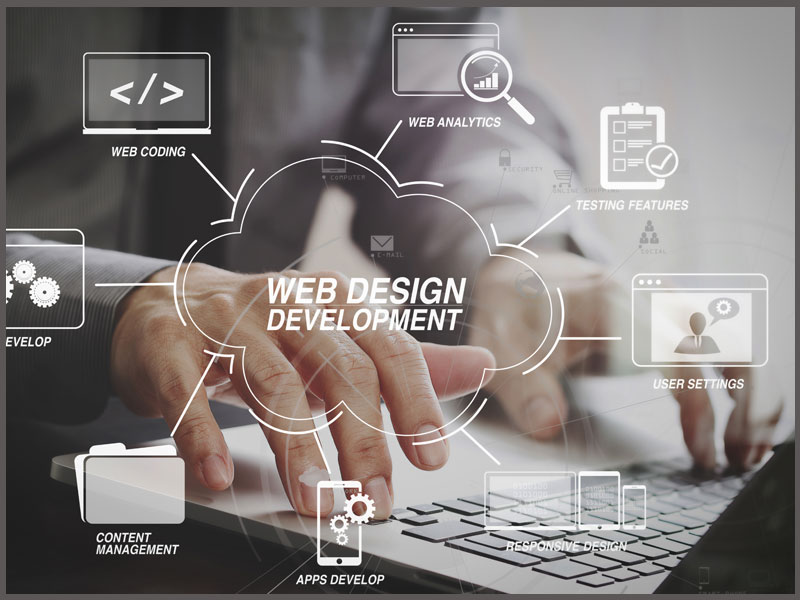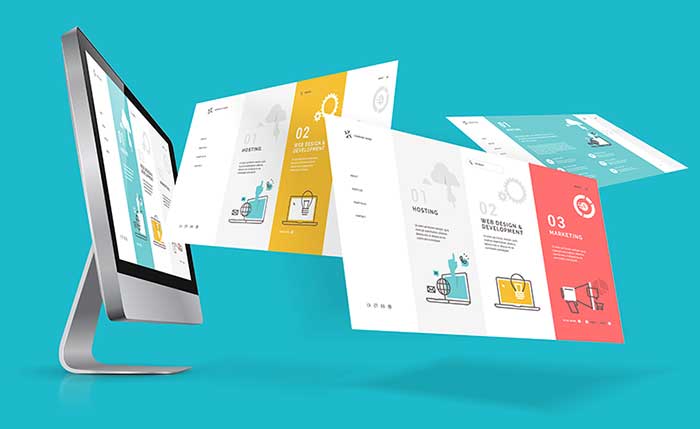Web Design Best Practices for Boosting Conversion Rates and Engagement
Web Design Best Practices for Boosting Conversion Rates and Engagement
Blog Article
Understanding Individual Experience: Trick Concepts for Effective Web Layout
In the realm of web layout, recognizing user experience (UX) is paramount to developing systems that not just attract but additionally preserve individuals. Trick principles such as instinctive navigating and effective feedback mechanisms play crucial duties in fostering customer complete satisfaction. In addition, factors to consider for ease of access make sure that all users can engage with the content perfectly.
Significance of Customer Experience

In the world of internet layout, one can not ignore the significance of user experience (UX) as a critical component that straight influences the success of a website. When individuals run into a intuitive and engaging interface, they are extra likely to discover the web content, transform into clients, or share their experiences with others.
It incorporates the overall performance of an internet site, making certain that navigating is smooth and details is quickly obtainable. Internet sites that prioritize UX are often viewed as more legitimate and reliable, which can have a profound effect on conversion prices.
Eventually, spending in user experience is not simply a design selection; it is a strategic decision that can separate a brand name in a congested market. By focusing on UX, businesses can produce purposeful interactions that reverberate with customers, paving the method for continual success in the digital landscape.
Usability Principles
Effective web style depends upon the application of essential usability principles that guarantee a web site is both user-friendly and practical. Central to these concepts is the concept of intuition, where customers can browse the website easily without substantial direction. Clear navigation frameworks, consisting of well-labeled menus and consistent designs, improve this intuitive experience, allowing customers to situate info quickly.

Uniformity is equally important; preserving uniformity in style aspects, terms, and treatments throughout the site helps to reduce confusion. Users should not have to relearn how to engage with different sections of the internet site.
Furthermore, error avoidance and recovery are essential for use. Web sites need to be developed to decrease the possibility of individual mistakes, and when errors happen, clear and constructive error messages need to assist users towards resolution.
Accessibility Factors To Consider
Making sure access in website design is extremely important for developing comprehensive digital experiences that satisfy all individuals, including those with disabilities. Ease of access considerations involve creating internet sites that fit diverse demands, making it possible for customers with aesthetic, acoustic, cognitive, or electric motor problems to navigate and communicate effectively.
To achieve this, internet designers ought to follow established guidelines, such as the Web Content Ease Of Access Standards (WCAG) These guidelines provide a structure for making content perceivable, operable, understandable, and robust. Key techniques consist of making sure sufficient shade comparison, offering message choices for non-text web content, and making sure key-board navigability.
Furthermore, semantic HTML must be utilized to enhance display viewers compatibility, allowing customers with aesthetic problems to comprehend the structure and meaning of content with ease. web design. Providing clear, succinct directions and making use of straightforward language can additionally improve functionality for people with cognitive handicaps
Normal availability testing, including actual customers with impairments, is important to determine barriers and enhance the user experience. By prioritizing availability, web developers not only conform with legal criteria but also cultivate a more equitable electronic landscape, eventually profiting everybody through boosted usability and engagement.
Visual Layout Components
A myriad of aesthetic layout aspects plays a crucial function in forming individual perceptions and experiences on a site. These components consist of color plans, typography, images, whitespace, and format, each contributing to the general aesthetic appeal and performance of a website.

Shade schemes stimulate feelings and can influence user activities; for example, cozy colors might develop a sense of necessity, while great colors often advertise peace. Typography, on the other hand, affects readability and can develop a brand's individuality - web design. The choice of font style and dimension must straighten with the internet site's goals and target audience
Images, consisting of pictures and symbols, boosts storytelling and can significantly affect user involvement. Premium visuals produce a feeling of expertise, while poor-quality photos may detract from the user experience.
Format and whitespace are similarly essential, as they guide customers with the material. A well-structured layout helps users locate information swiftly, while appropriate whitespace avoids clutter, facilitating a more pleasurable searching experience.

Examining and Version
Individual testing and model are fundamental components of a successful web design process. Customer testing includes observing how actual individuals engage with a site, recognizing use issues, and recognizing individual actions.
Model, on the various other hand, is the process of fine-tuning the style based upon the insights acquired from customer screening. By making step-by-step adjustments and re-evaluating the style, groups can boost capability, boost aesthetics, and maximize user involvement. This intermittent approach fosters a society of continuous enhancement, permitting designers to adapt to individual needs and emerging fads efficiently.
Additionally, incorporating both user screening and model right into the design process brings about even more Check This Out educated decision-making and ultimately causes a much more user-centered product. By accepting these concepts, web developers can create more instinctive, appealing, and efficient experiences that resonate with their target audience, eventually driving greater click to find out more customer fulfillment and retention.
Final Thought
In conclusion, customer experience is a crucial part of efficient internet style, incorporating usability, availability, and aesthetic factors to consider. Continual testing and iteration offer as vital processes for determining and attending to user discomfort points, making certain that internet layouts continue to be adaptable to progressing demands.
In the realm of internet design, understanding individual experience (UX) is paramount to creating platforms that not just draw in yet additionally maintain individuals.In the realm of web layout, one can not underestimate the relevance of user experience (UX) as a pivotal component that straight influences the success of an internet site. Customer screening involves observing how genuine customers connect with a web site, identifying use problems, and comprehending customer behavior.In conclusion, customer experience is an essential element of efficient web layout, encompassing use, ease of access, and visual considerations. Continuous screening and version offer as important procedures for determining and dealing with individual discomfort factors, ensuring official statement that internet layouts remain versatile to advancing needs.
Report this page